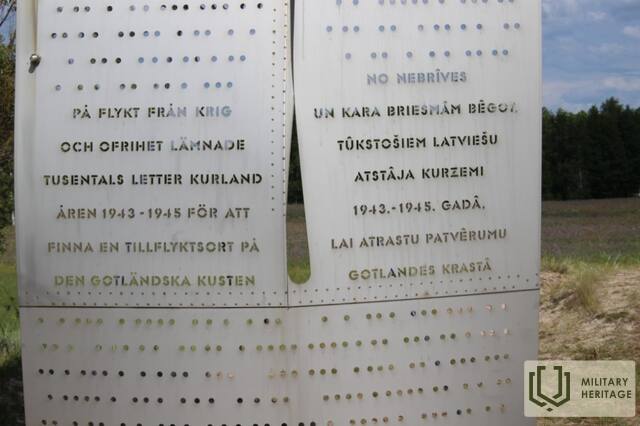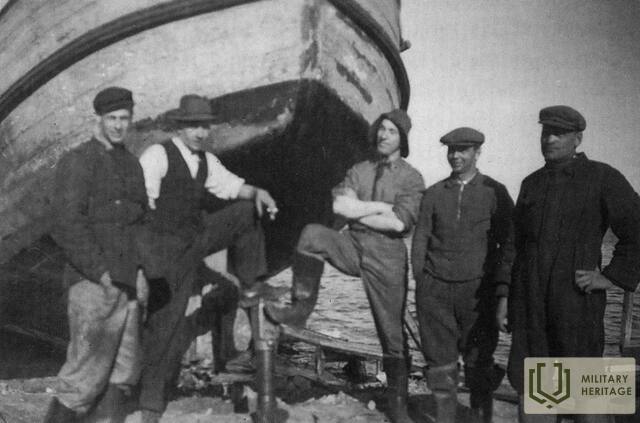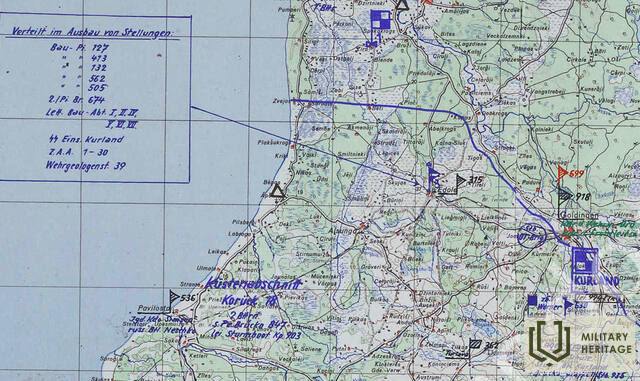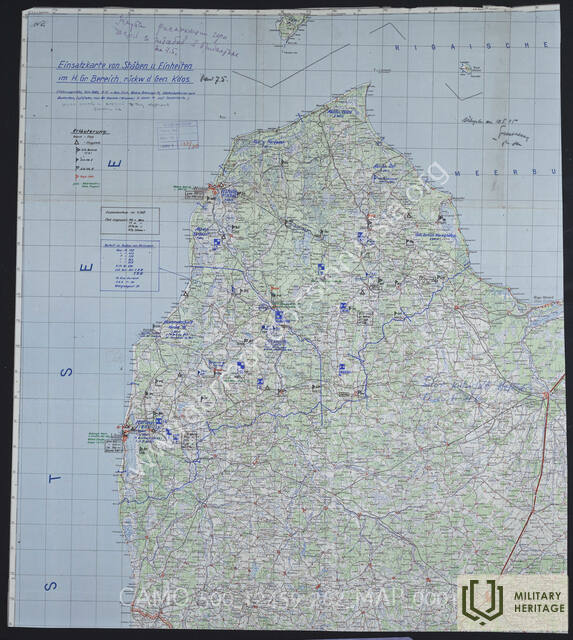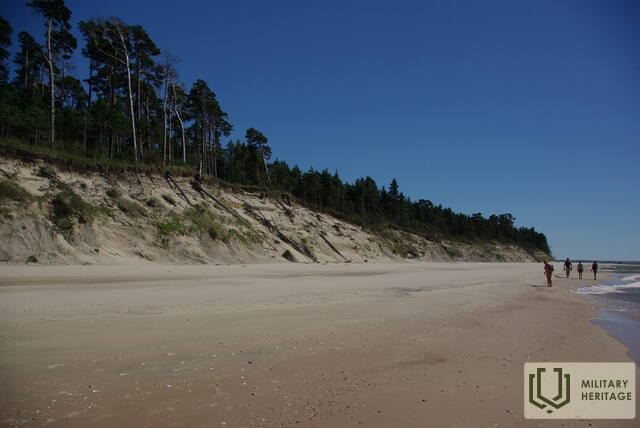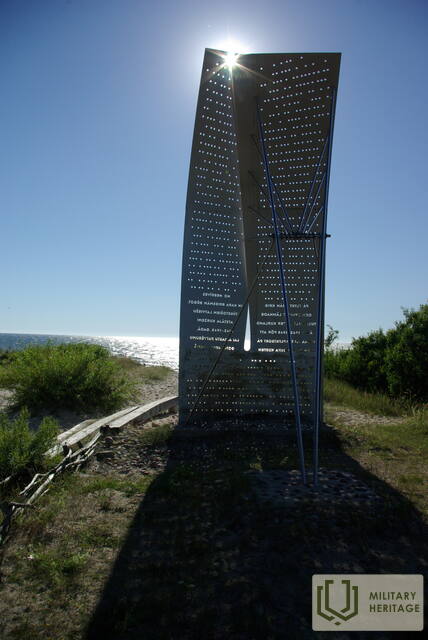Jūrkalnėje pabėgėlių atminimo ženklas „Vilties burė“
Memorialinė vieta
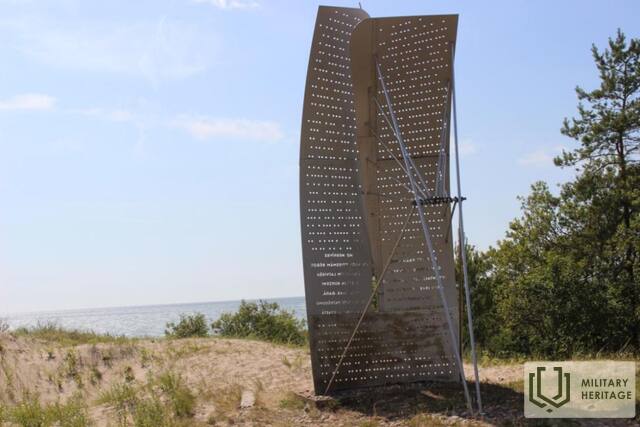

Atminimo ženklas „Vilties burė“ skirtas Antrojo pasaulinio karo pabėgėliams, 1944 ir 1945 m. laivu perplaukusiems Baltijos jūrą į Gotlando salą Švedijoje. Memorialas yra Osvalkuose, kopose tarp jūros ir Ventspilio–Liepojaus greitkelio, netoli viešojo transporto stotelės „Kaijas“. Jį sukūrė skulptorius Ģirtas Burvis, kuris jį įgyvendino kaip vilties burę, simbolizuojančią Latvijos pabėgėlių atminimą.
Nuo 1944 m. rudens iki 1945 m. pavasario, bijodami atnaujintos sovietų okupacijos, bet nenorėdami evakuotis į nuniokotą ir grasinamąją Vokietiją, kai kurie Latvijos piliečiai bandė jūra pasiekti artimiausią neutralią šalį – Švediją. Kai kuriuos laivus organizavo Latvijos centrinė taryba, padedama Vakarų sąjungininkų šalių, todėl Jūrkalnės valsčiuje atsirado vienas didžiausių pabėgėlių koncentracijos taškų. Be Latvijos centrinės tarybos organizuotų laivų, per jūrą buvo perplaukta ir kitų laivų. Manoma, kad jūrą pavyko perplaukti apie 5000 žmonių. Žuvusiųjų skaičius nežinomas, nes nebuvo registruojami pabėgėliai, paliekantys Kuržemės pakrantę.
Kelionės buvo pavojingos, nes pabėgėliams grėsė vokiečių patruliai pakrantėje ir jūroje, jūrų minos, sovietų lėktuvai ir karo laivai, taip pat audros, nes kirtimai dažnai vykdavo netinkamais ir perkrautais kateriais bei valtimis, neturint pakankamai kuro ir maisto atsargų, jūros žemėlapių ir navigacijos prietaisų. Išvykimai iš Latvijos buvo vykdomi slapta. Laivų tikslas buvo Gotlando sala, o kelionės dažniausiai prasidėdavo Kuršo vakarinėje pakrantėje (nuo Jūrkalnės iki Gotlando yra 90 jūrmylių arba apie 170 kilometrų tiesia linija).
Panaudoti šaltiniai ir literatūra:
https://replay.lsm.lv/lv/yareksts/ltv/136422/atslegas-kurzemes-kara-begli-un-laivu-viri-glabeju-varonstasts
https://play.tv3.lv/series/_,serial-2703568/_,episode-2703576
Judėjai. Ēriks Tomsons, Pēteris Jansons, Laimonis Pētersons / Sudarė M. Zirnīte. Ryga: Mansardas, 2021 m.
Susijusi laiko juosta
Susijusios temos
Susijusi istorija
Pirmasis pabėgėlių laivas „Centība“ iš Bambalio
1944 m. spalio 31 d. laivas „Centība“ išplaukė iš Kuržemės pakrantės. Šio laivo išvykimą, remdamasi kelių bendrakeleivių prisiminimais, atkūrė Latvijos Centrinės Tarybos sušaukėja Valentine Lasmane.
Paskutinė Kārlio Skalbės gimtadienio šventė Kuržemės pajūryje
1944 m. lapkričio 7 d. Latvijos pabėgėlių gyvenvietėje Kuržemės pakrantėje vyravo šviesi nuotaika, kai Jūrkalnės „Laukgaļi“ vykę poeto Kārlio Skalbės 65-ojo gimtadienio minėjimai. Vos po keturių dienų Kārlis Skalbė laivu išplaukė į Švediją kaip pabėgėlis. Tą dieną Kārlis Skalbė paskutinį kartą atšventė savo gimtadienį.
Pabėgėlių perkėlimo valtimis punktas iš Kuržemės pakrantės į Švediją prie „Pāžių“ namų
Viena iš svarbių perkėlimo vietų buvo netoli „Pāžių“ namų, kur dabar pastatytas paminklas – „Vilties burė“. „Laivai reguliariai atplaukdavo ir daugiausia žmonių išvykdavo iš „Pāžių“, – sako I. Freibergo prisiminimai.
Valdemāro Ģinterio slapta ir pavojinga veikla
Valdemāro Ģinterio vardas buvo paskutinė viltis daugeliui Latvijos pabėgėlių pabėgti į Švediją. Per didelis pabėgėlių dėmesys buvo pavojingas, todėl Ģinteris jį laikė paslaptyje.
Paskutinė Kārlio Skalbės gimtadienio šventė Kuržemės pajūryje
1944 m. lapkričio 7 d. Latvijos pabėgėlių gyvenvietėje Kuržemės pakrantėje vyravo šviesi nuotaika, kai Jūrkalnės „Laukgaļi“ vykę poeto Kārlio Skalbės 65-ojo gimtadienio minėjimai. Vos po keturių dienų Kārlis Skalbė laivu išplaukė į Švediją kaip pabėgėlis. Tą dieną Kārlis Skalbė paskutinį kartą atšventė savo gimtadienį.




